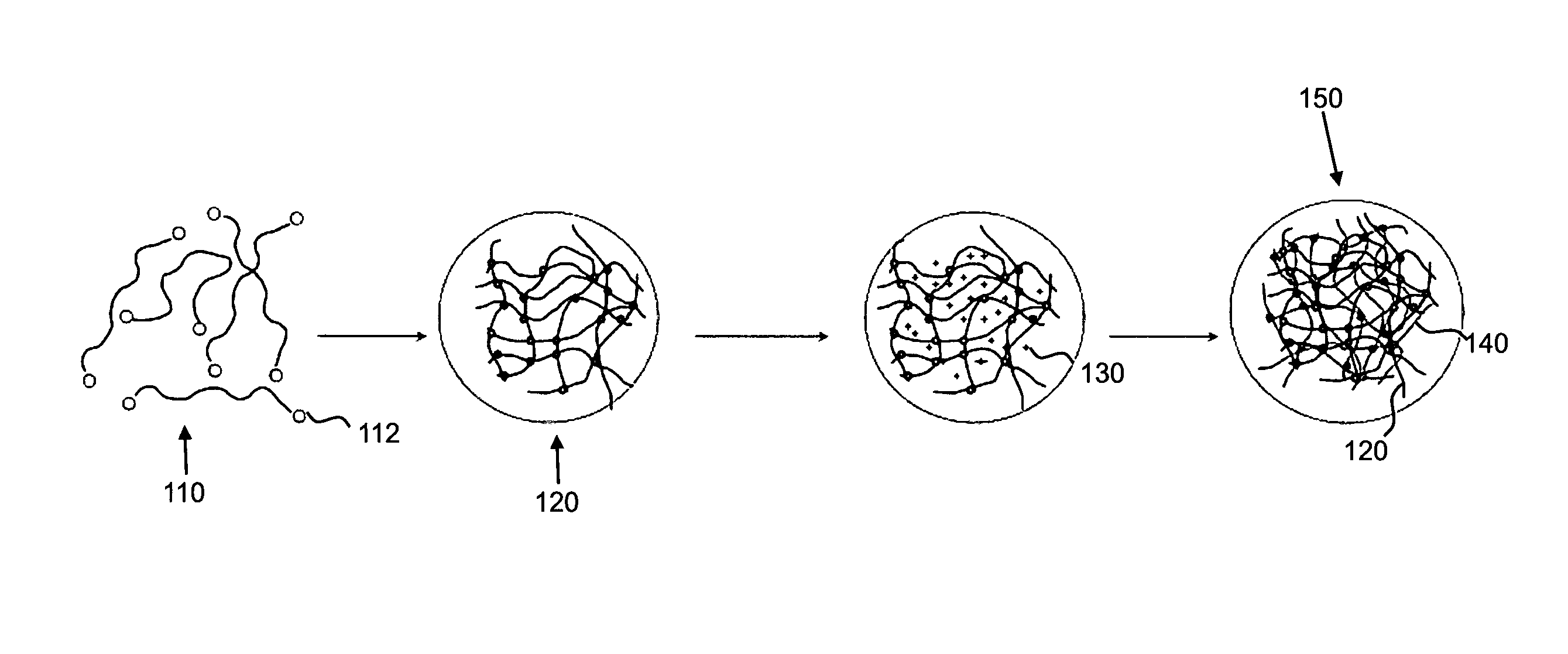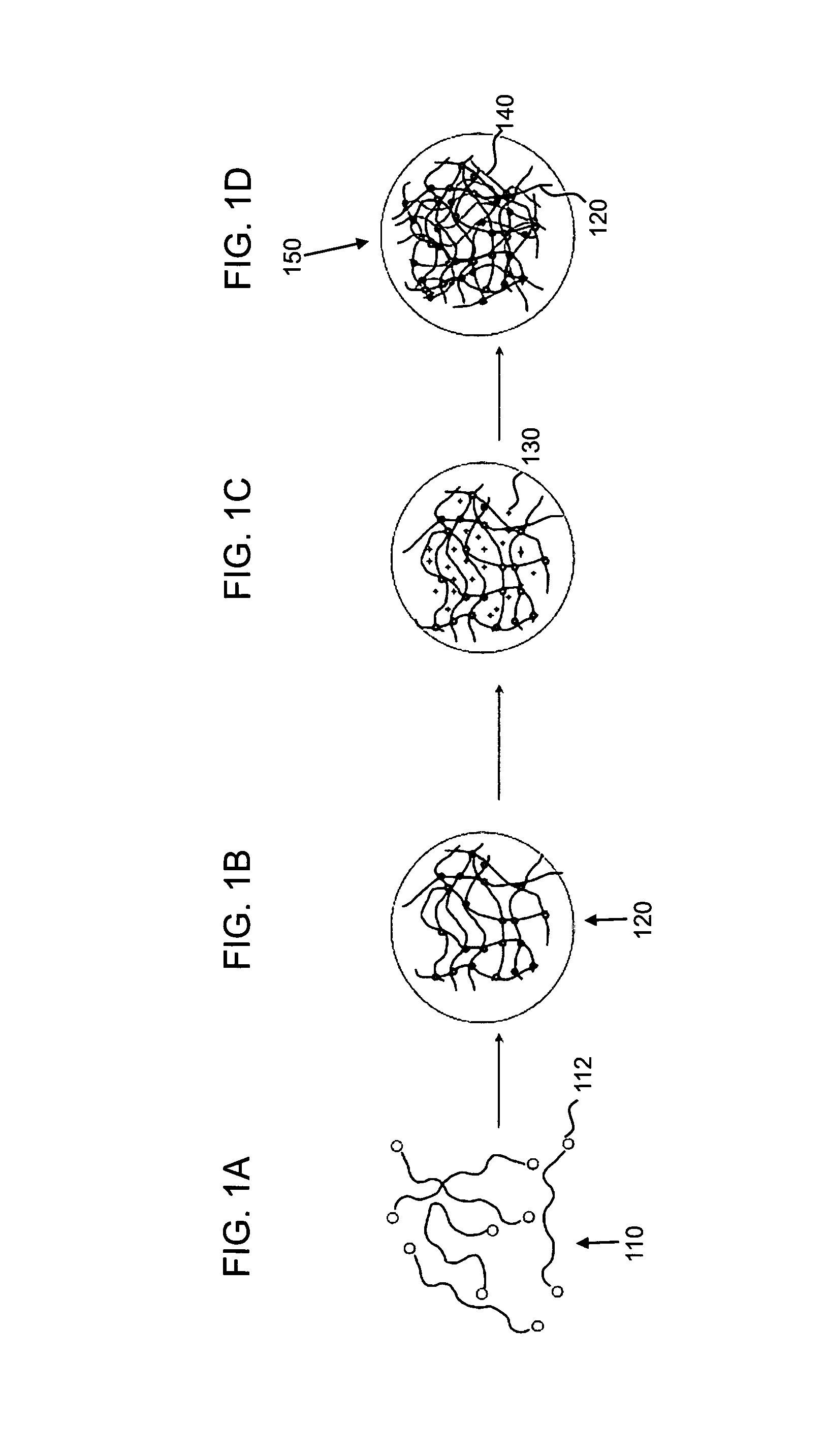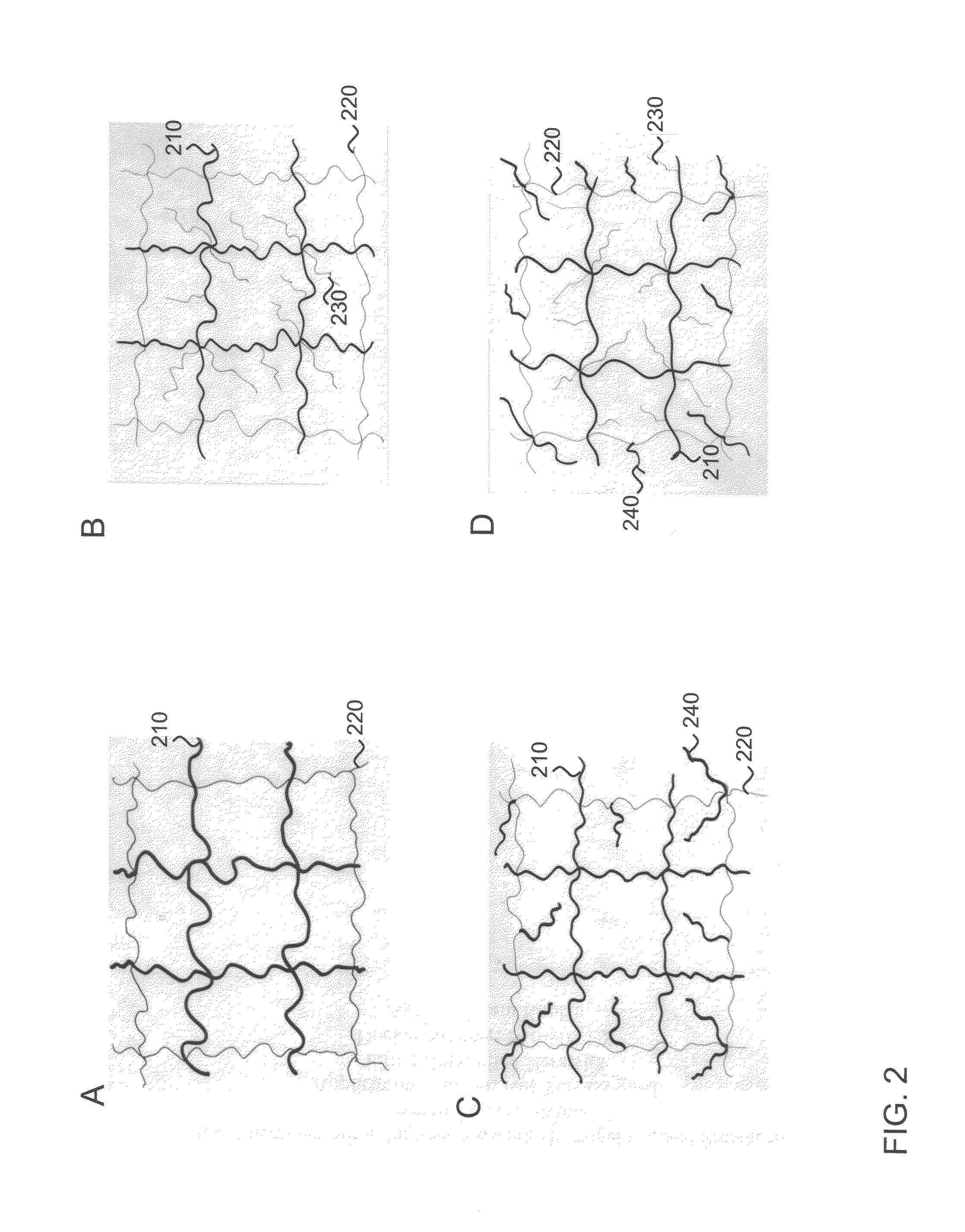Interpenetrating polymer network hydrogel corneal prosthesis
a polymer network hydrogel and interpenetrating technology, applied in the field of corneal implants, can solve the problems of future shortage of corneas, loss of vision, and blindness, and achieve the effects of high water content, high tensile strength, and high nutrient permeability
- Summary
- Abstract
- Description
- Claims
- Application Information
AI Technical Summary
Benefits of technology
Problems solved by technology
Method used
Image
Examples
examples
Photolithographically Patterned Artificial Cornea
[0075]FIG. 16 shows a photomicrograph of a photolithographically patterned artificial cornea 1610 with optically clear central core 1620 and porous peripheral skirt 1630. In this example, the central core was made of a PEG / PAA IPN and the skirt was made of PHEA. The PEG / PAA IPN hydrogel was synthesized by a two-step sequential network formation technique based on UV initiated free radical polymerization. A precursor of the first solution was made of purified PEG-diacrylate (MW 8000) dissolved in deionized water with hydroxymethyl propiophenone as the UV sensitive free radical initiator. The solution was cast into a Teflon mold, covered with a glass plate, and reacted under a UV light source at room temperature. Upon exposure, the precursor solution underwent a free-radical induced gelation and became insoluble in water. To incorporate the second network, the PEG hydrogel was removed from the mold and immersed in a 50% v / v acrylic acid...
PUM
| Property | Measurement | Unit |
|---|---|---|
| molecular weight | aaaaa | aaaaa |
| molecular weight | aaaaa | aaaaa |
| tensile strength | aaaaa | aaaaa |
Abstract
Description
Claims
Application Information
 Login to View More
Login to View More - R&D
- Intellectual Property
- Life Sciences
- Materials
- Tech Scout
- Unparalleled Data Quality
- Higher Quality Content
- 60% Fewer Hallucinations
Browse by: Latest US Patents, China's latest patents, Technical Efficacy Thesaurus, Application Domain, Technology Topic, Popular Technical Reports.
© 2025 PatSnap. All rights reserved.Legal|Privacy policy|Modern Slavery Act Transparency Statement|Sitemap|About US| Contact US: help@patsnap.com



